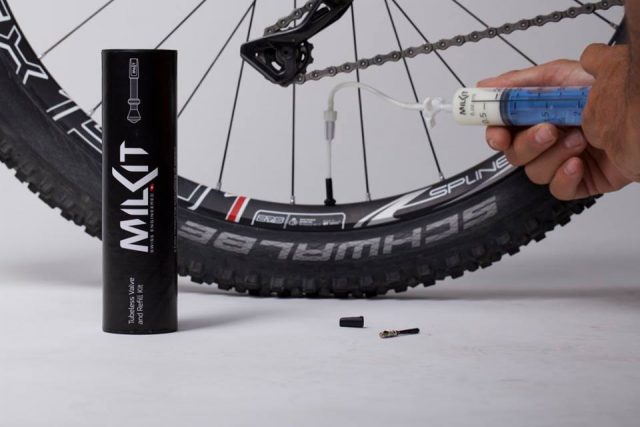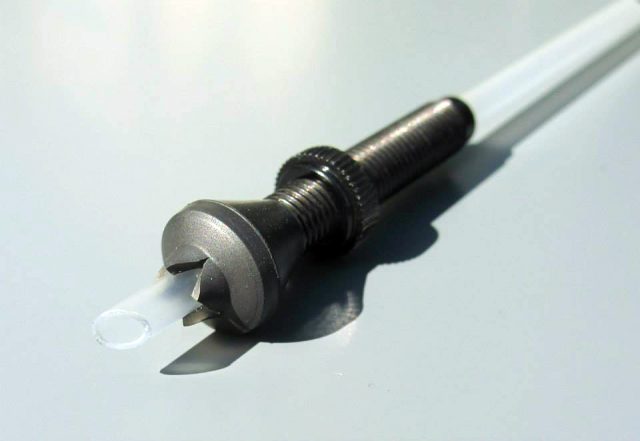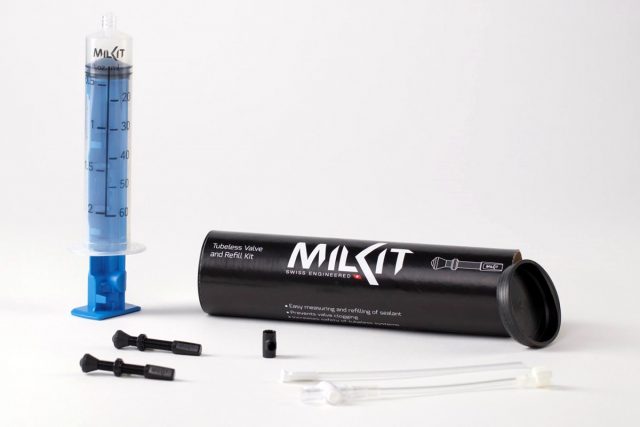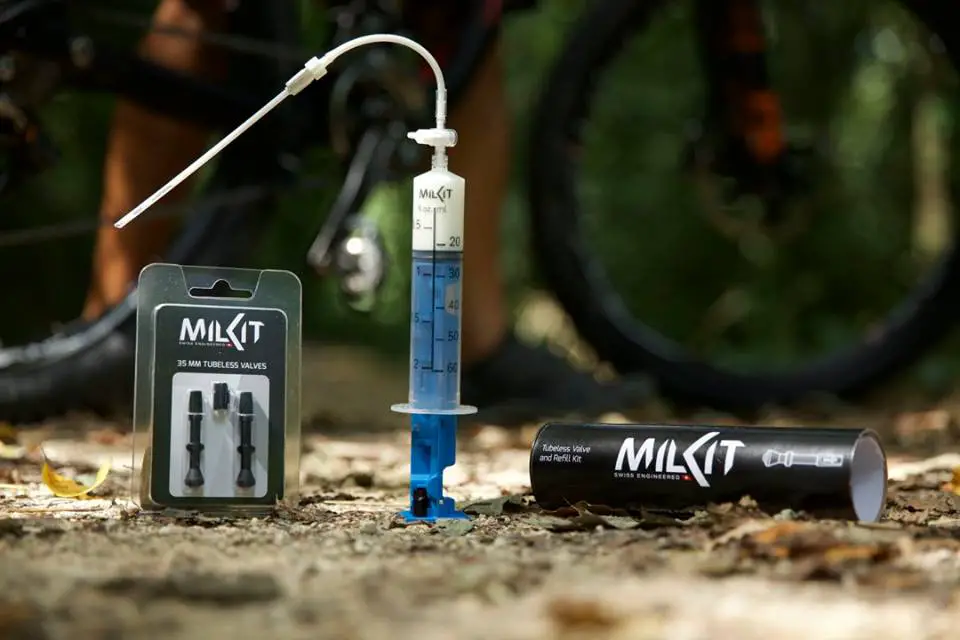
That is, until that sealant that’s been keeping the entire system working goes dry and leaves you stranded.
Just such an experience is what prompted the development of milKit’s tubeless valve cores. While we all could unseat our tyres from the rim periodically to check sealant health, it’s messy and unpleasant and raining outside and cold in the shed and… we rarely do. milKit’s solution, while it does require some work, looks to be a whole lot simpler.

Centred around a dedicated valve, the milKit have added a second one-way valve at the inside of the tyre and a modified valve core that keeps that valve open in normal use. These, combined with a syringe and hose, allow the valve cores to be removed and sealant to be drawn out and measured. If it comes back low (or empty), simply add your sealant of choice to the syringe and inject through the core. All without deflating the tyre or needing to re-seat the bead.

Granted, this could easily be filed (alongside tubeless tyres themselves) under “First World Problems,” but given how many of our flats are entirely preventable, if milKit brings checking sealant below the hassle threshold it may well prove worthwhile. A bike’s worth of milKit (two valves, hose, shut-off valve, and core remover) fit happily within the custom-made syringe, which should make it easy to toss in the ‘go’ box for weekends away. milKit is available through shops or amazon.co.uk for £44.
Comments (7)
Leave Reply
Post Comment

Custom made syringe my arse. That looks like a standard 50/60mm Luer lock.
^the plunger is molded so that all of the parts sit snap into place.
Can’t you basically do this already if you have a valve with removable core?
“Can’t you basically do this already if you have a valve with removable core?”
The diaphragm on the valve and the tap on the syringe let you use the pressure in the tyre to push the sealant out into the tube. That wouldn’t work with a typical valve.
I’ve had some for a year or so – can’t say I’ve checked sealant levels very often but they do make for a nice clean and easy tyre changing/sealant reuse process. And my valves no longer clog with sealant.
In the time it takes to check, I could just put a bit more sealant in. So the worst-case scenario is that I have slightly too much sealant in my tyre because I’ve re-filled early. No?
Ah, thanks Gary. I thought you just pushed the tube in and sucked it out.
I got one on the Kickstarter campaign and been using it for a year. It’s absolutely spot on! It’s also useful for removing sealant from tubulars if you pl;an on storing them over winter!